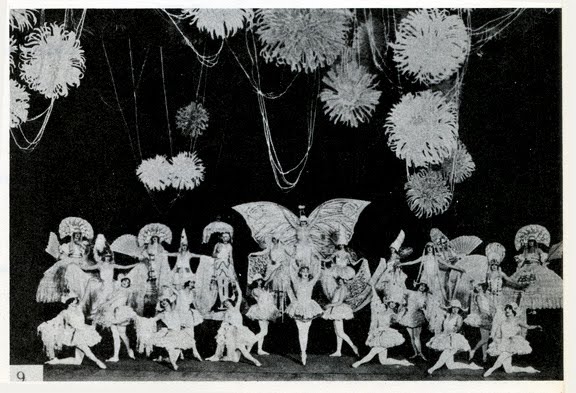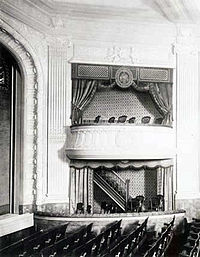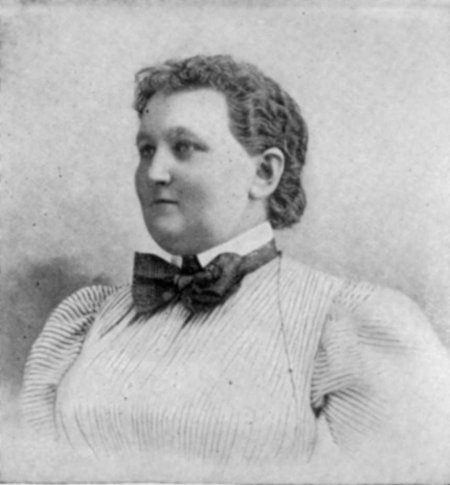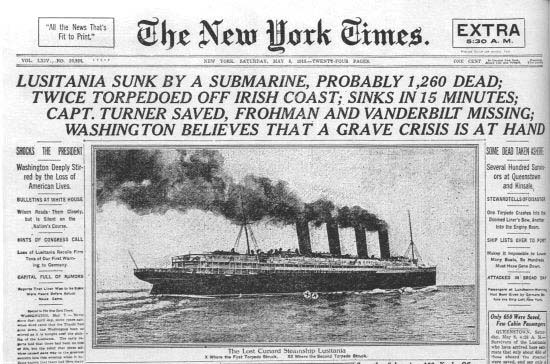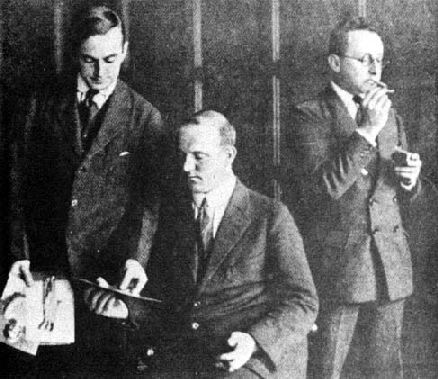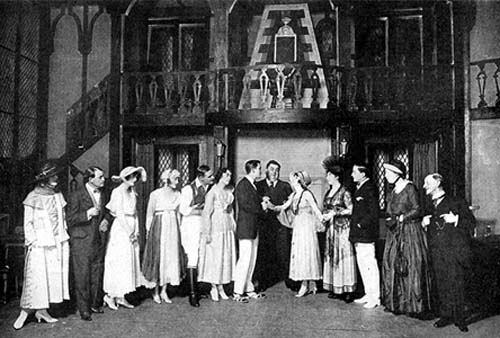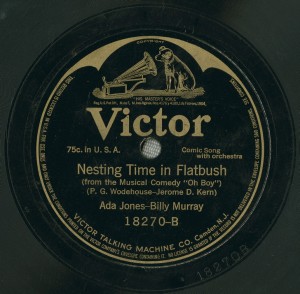With the advent of the Ziegfeld Follies in the early part of the 20th century and simultaneously the push on Broadway to present big musicals, the American stage was becoming known for its grandeur and opulence. There would be various reactions to this trend, including one that resulted in a downsizing of the Broadway musical and a new focus on craft, character development and story. The musicals that were created in this vein were known by the name of the venue in which they were first staged- The Princess Theatre. Here’s how the Princess Musicals came to be.
Joining Forces
The Princess Theatre was built in 1913 when various Broadway folks joined forces. These included the Shubert Brothers (Lee Shubert, Samuel S. Shubert, and Jacob J. Shubert), theatre producer Ray Comstock, theatrical agent Elisabeth Marbury and actor-director Holbrook Blinn. It’s interesting that such a large and diverse group would get together to create what was an intimate theatre, as The Princess Theatre, which was designed by theatre architect William A. Swasey, sat just 299 patrons. Built on a small strip of land at 106 West 39th Street (just off Sixth Avenue), the venue was designed for short dramas. However, the initial effort was not successful. The short dramas produced at the theatre did not find audiences.
New Focus for The Princess
Comstock and Marbury are credited with creating a new focus for the diminutive venue. They felt that The Princes Theatre might be the perfect setting for musicals. But these would need to be quite different than the big musical comedies that Broadway audiences had become accustomed to attending. Known as musical comedies, the shows sacrificed story, character and any sense of reality for jokes, comic bits and big musical numbers.
When the theatre was failing, it was Marbury who was enlisted to change its fortune. She was charged with booking the struggling venue. She had a brilliant idea. It was to contact Jerome Kern and basically offer him the space as a place where he could launch new musicals.
Kern, who had started as a song plugger on Tin Pan Alley and a rehearsal pianist for stage musicals, had broken into composition by the fact that he was an active composer who was always around Broadway musicals. He ended up contributing songs to numerous Broadway shows and wrote his first complete Broadway score for the musical The Red Petticoat (1912).
One twist of fate that was responsible for Kern being available for the new venture involved the young composer acting in an irresponsible manner. In 1915, the same year he would be contacted by Marbury, Kern was supposed to sail from New York to London with theatre owner/producer Charles Frohman. But Kern played poker that night, staying at the gaming table into the early morning hours. He fell asleep and awoke late, missing the boat. That boat was the RMS Lusitania. During that voyage, the Lusitania would be sunk by a German submarine. Frohman and 1,194 others would perish. Kern would write the Princess Musicals.
Kern, Bolton, Wodehouse
The Princess Musicals, which were written from 1915 to 1918, totaled seven. The first ones were written by Kern and Guy Bolton. The initial show was entitled Nobody Home, which was an adaptation of the English operetta Mr. Popple of Ippleton. They basically rewrote it for the space, but somehow despite the fact that the operetta reduction fit on the Princess stage it was not a good artistic fit. It ran for just 135 performances and barely broke even.
The same year, the team created Very Good Eddie. The results were quite different. One reason was the two created a musical that connected with the space and audiences. Very Good Eddie, which would run for 341 performances, focused on two couples, both of whom were on their honeymoons. The two couples, who are on a Hudson River steamboat, got involved in various misunderstandings, which resulted in conflict, comedy and motivated musical numbers. The characters were grounded in American culture, the stage setting was simple but overall real and the story had a coherent plot and overall realistic dialogue.
In 1917, accomplished lyricist/librettist P.G. Wodehouse joined the team and with the addition of the clever Brit, the Princess Musicals had an additional foundation element. Kern handled composition duties, Bolton book and lyrics and Wodehouse specific lyrics and book workings.
Oh Boy!
The biggest hit for the trio creating the Princess Musicals was Oh Boy!, which ran for 463 performances and was one of the first American musicals to enjoy a solid run in London. Utilizing a U.S. setting, contemporary, homegrown characters and American sensibilities for situation and character comedy, Oh Boy! connected with audiences.
The comic premise was simple- George, a newlywed with good intentions and a wife out of town, gives temporary refuge in his home to a beautiful actress on the run. When his wife comes back all sorts of comic misunderstandings, complications and situations ensue. By the end of the show every problem and challenge has been solved.
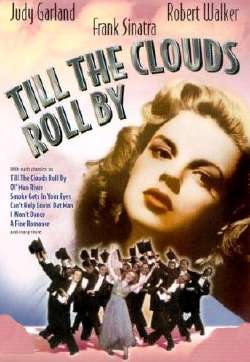
Till The Clouds Roll By was not only the title of a Kern hit, but it was also the name of his 1946 MGM bio-pic
The score, which included the Kern classic “Till the Clouds Roll By,” helped push the plot along, the book offered genuine characters pursuing their objectives and the lyrics functioned on various levels. As an example, the Wodehouse lyrics to Nesting Time in Flatbush use references to other songs from contemporary musical comedies to define the male-female relationship, reference local living conditions in a comedic manner and projects a heartfelt proposal from an earnest suitor. “Nesting Time” is a fairly well-mannered but clear reference to marriage and sex (in that order). During this time, a woman who was pregnant might be said to be “on the nest.” This was a polite term.
Nesting Time in Flatbush
I’ve always liked the sort of song you hear so much today,
Called “When it’s something-or-other time” in some place far away.
Oh, “Tulip time in Holland,” a pleasant time must be,
While some are strong for “Apple-blossom-time in Normandy.”
But there’s another time and place that makes a hit with me.
When it’s nesting time in Flatbush,
We will take a little flat,
With welcome on the mat
Where there’s room to swing a cat.
I’ll hang up my hat, I’ll hang up my hat;
Life will be so sweet with you.
When it’s nesting time in Flatbush,
In Flatbush Avenue.
Our little home may have defects like all these flats in town:
It’s wiser not to lean on the walls, because they might fall down.
It’s rather badly lighted, which makes it hard to see.
The neighbors play the Gramophone each night till after three.
But it will be a Paradise if shared, my love, with thee!
When it’s nesting time in Flatbush,
As you heard me say before,
You will see the janitor
With the girl whom I adore.
On the seventh floor, on the seventh floor,
We will start to bill and coo,
When it’s nesting time in Flatbush,
In Flatbush Avenue.
Importance of the Princess
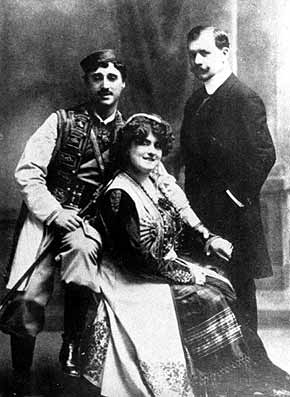
In the early part of the century European operettas like The Merry Widow were big hits. The Princes Musicals were very different.
It’s said that the physical limitations of the Princess Theatre made the writing team focus on story and character due to the fact that there was no room, literally, for big effects, massive musical numbers or lavish settings. The Princess was a wonderful incubator for three talented men and it helped to focus the energies of the creators on elements that had been secondary in musical comedy, namely a solid story, cogent plot and motivated characters. The last Princess Musical was Oh, My Dear (1918). Kern, who was by then busy with other projects, did not write the score. Those duties fell to Louis Hirsch. It closed after a respectable run of 189 performances.
Perhaps the most important thing that the Princess Musicals did was that they helped establish Jerome Kern as not just a legitimate musical theatre composure but as a preeminent one. He would help lead the genre into its Golden Age.

